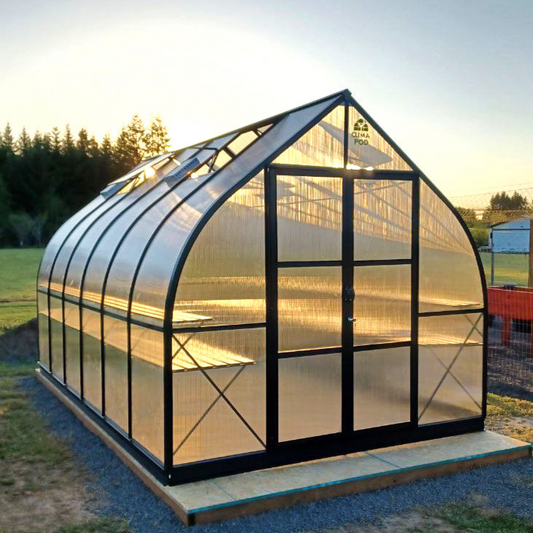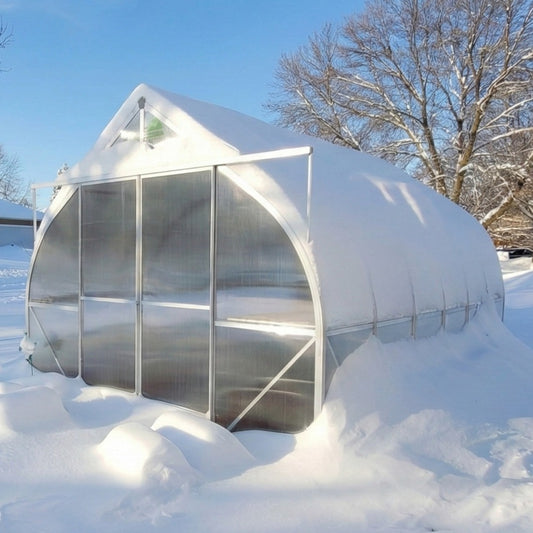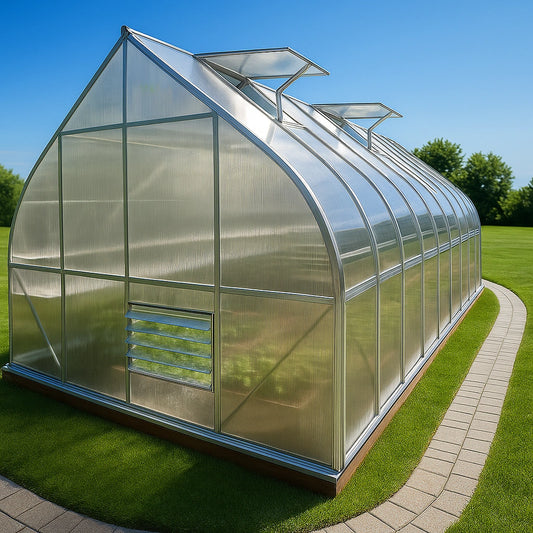
Winter Carrot Planting: How to Grow Sweet, Early Harvests in Cold Weather
Planting carrots before winter might sound counterintuitive, but it’s one of the smartest ways to enjoy an early, flavorful harvest in spring. With the right techniques, soil preparation, and greenhouse setup, gardeners and small farmers across the U.S. can extend their growing season and make the most of colder months.
Why and When to Plant Carrots Before Winter
Planting carrots before winter gives you a head start on the next season. Your plants complete part of their growth cycle in the fall, allowing you to harvest crisp, tender roots much earlier in spring. It also helps spread your garden workload since fall is typically less busy than spring.
The key is timing. Sow your carrots when air temperatures drop to around 35–40°F (2–4°C) and the soil begins to cool, but before it freezes completely. If planted too early, seeds might sprout prematurely and die during frost.
Best Carrot Varieties for Fall and Winter Planting
Many carrot varieties perform well in cool conditions, but if you want the earliest spring harvest, choose early or mid-season types. Look for varieties known for cold tolerance and sweetness after frost exposure.
- Nantes. Sweet, early, and perfect for fresh eating or juicing.
- Chantenay Red Cored. Great for heavier soils and compact gardens.
- Orange Muscat. Very early, aromatic, and tender, ideal for winter growing.
- Canada F1. High-yield, mid-season hybrid suited for long storage.
- Tip-Top. Mid-season, crack-resistant, and excellent for storing through spring.
Late varieties can also be planted in fall if your goal is storage-friendly roots. In general, carrots are cold-hardy enough to survive U.S. winters with minimal protection, especially in southern and coastal regions.
Step-by-Step Guide to Fall Carrot Planting
1. Choose the Right Location
Select a sunny spot with light, well-drained soil. Avoid planting carrots in the same location as last year’s crop to prevent disease buildup. The best predecessors include onions, potatoes, or cabbage. Avoid planting after other root crops.
2. Prepare the Soil
Carrots thrive in loose, non-acidic soil. If your soil is heavy or clay-based, loosen it deeply or mix in sand to improve drainage and allow the roots to grow straight. You can reduce soil acidity with garden lime or wood ash applied a few months before planting.
Avoid adding fresh manure or nitrogen-rich fertilizers - these encourage excessive leaf growth and cause misshapen roots.
3. Sowing Technique
Sow carrot seeds in moist soil to a depth of about ½ inch (1 cm) with rows spaced 6–12 inches (15–30 cm) apart. Once seedlings appear, thin them to about 2 inches (5 cm) between plants.
Do not water again until spring unless the soil is extremely dry. This helps the roots develop deeper and stronger.
4. Protect the Beds
After sowing, lightly cover the bed with pine branches or mulch to prevent soil crusting. Avoid thick mulch in fall, it can cause premature sprouting. Once snow arrives, the natural insulation will protect your seeds through winter.
Smart Tips and Tricks for Easier Carrot Growing
Carrot Tape and Pre-Spacing
To save time thinning, use pre-spaced carrot seed tapes or make your own using biodegradable paper. This ensures even spacing and strong, uniform roots come spring.
Raised Beds and Greenhouse Growing
Raised beds heat up faster in early spring, promoting quick germination. For gardeners in colder climates, a greenhouse or cold frame helps maintain consistent soil temperature and moisture - ideal for winter sowing.
Sawdust Trick
Mixing fine sawdust into the soil or seeding rows helps maintain consistent spacing and soil moisture. It also prevents crusting after rain or snowmelt.
Final Thoughts & Year-Round Growing with a Greenhouse
Planting carrots before winter is one of the easiest ways to get an early harvest without adding much work to your spring season. With careful soil preparation and a reliable cold-weather greenhouse, you can enjoy fresh, sweet carrots long before outdoor gardens are ready.
Ready to extend your growing season? Explore durable, all-season greenhouse kits. Our structures are engineered for stability, insulation, and year-round productivity. Perfect for gardeners and small farms across the U.S. Grow smarter, not harder with ClimaPod Greenhouses.











